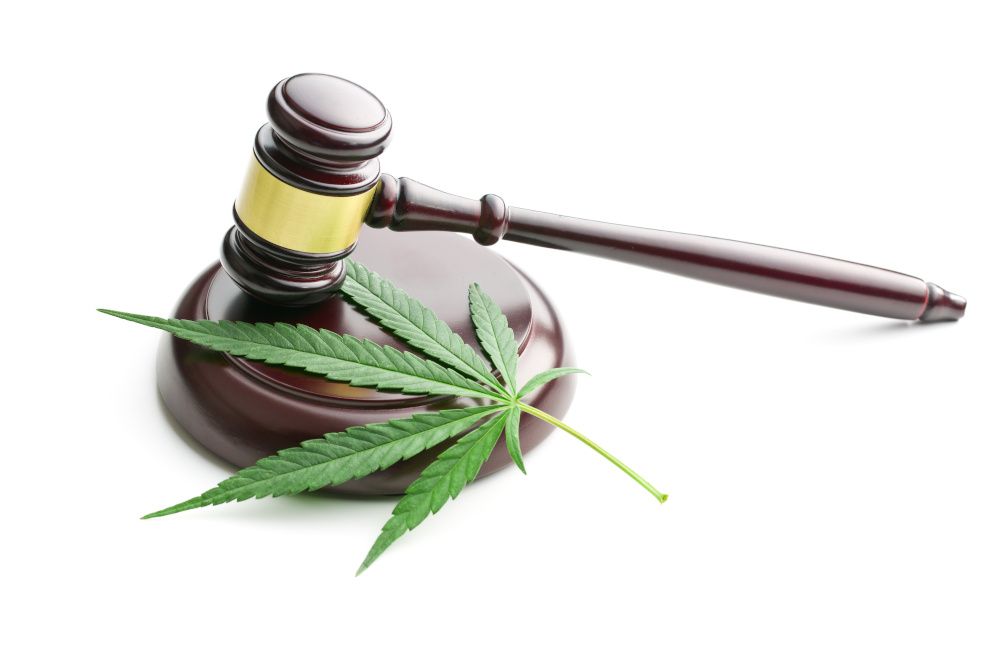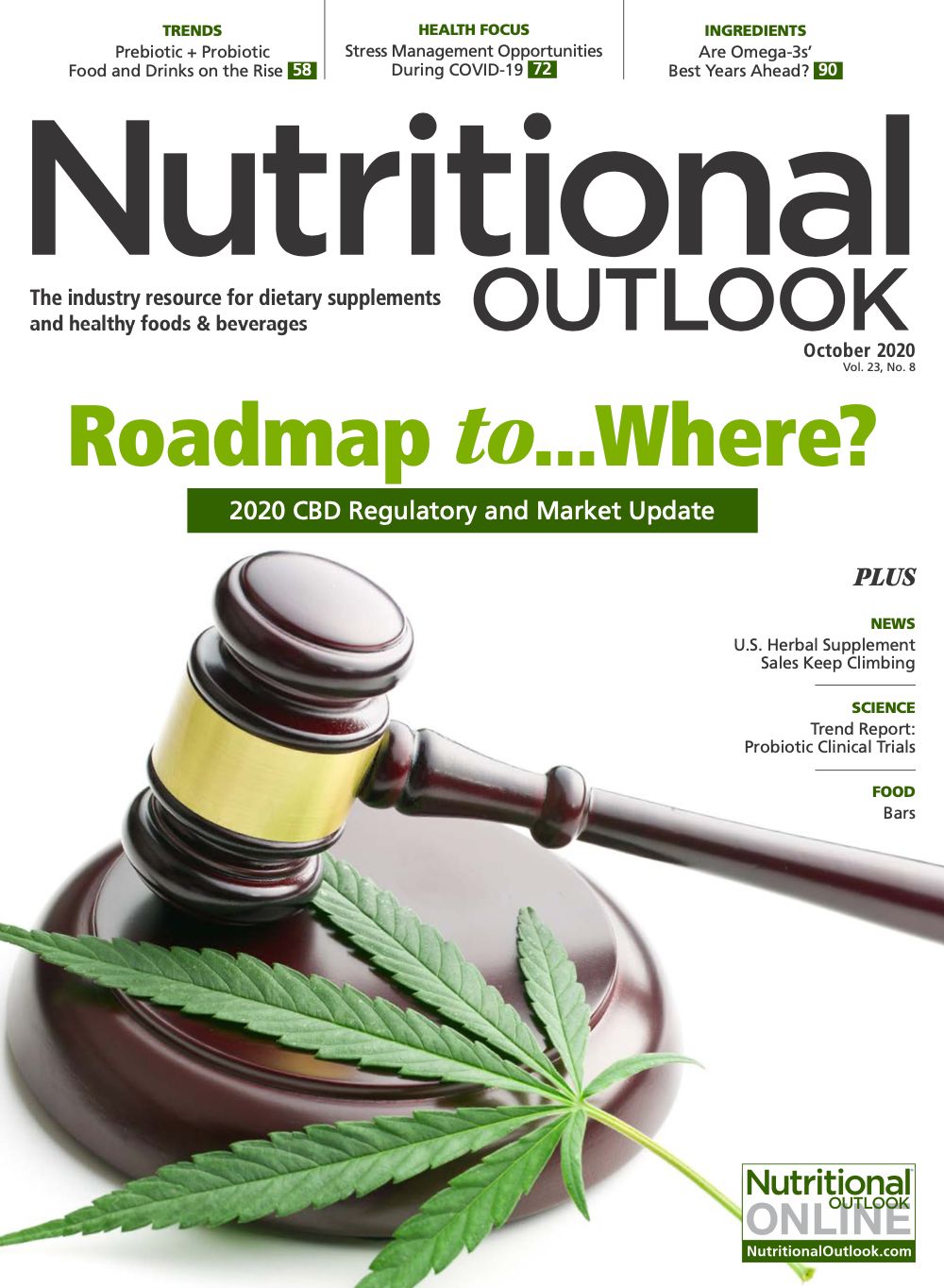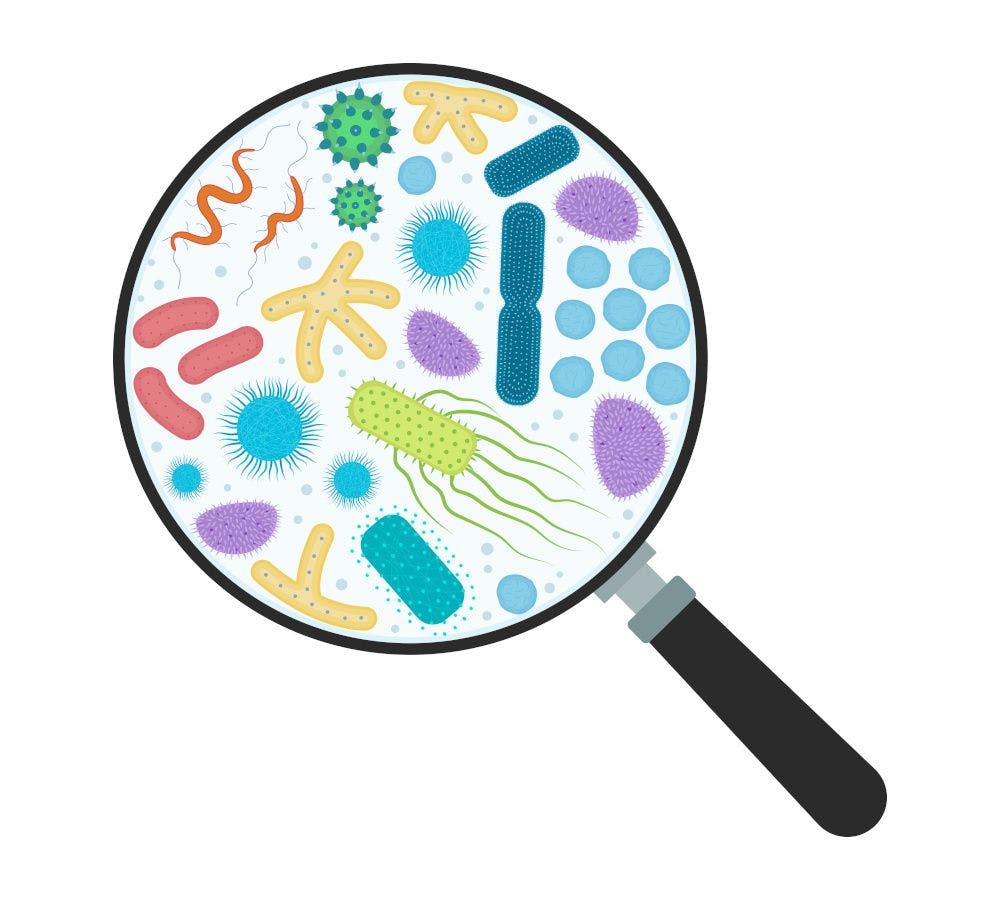CBD regulatory and market update 2020
What does CBD’s legal and sales status look like in 2020?
Photo Credit © Jiri Hera - Stock.adobe.com

What’s the best word to describe the hemp-derived cannabidiol (CBD) space today? Uncertain. The market remains adrift in legal limbo despite the fact that CBD has achieved widespread awareness and usage among consumers. Then there’s also the COVID-19 effect. How will CBD sales ultimately fare amidst lockdowns and shifting consumer priorities?
Ahead, we take stock of where the market currently stands. And we ask: As sales grow each year, how does one halt the runaway train that is hemp-derived CBD?
Sales Snapshot
CBD may be gaining more users each year, but has sales growth been steady? In previous years, after all, CBD’s sales trajectory has been immense. In 2018, for example, according to data previously provided by market researcher SPINS (Chicago), CBD experienced 382% sales growth in the natural channel (52 weeks ending November 4, 2018). In 2019, SPINS reported that CBD experienced an additional 113% sales growth (52 weeks ending October 6, 2019).
This year, however, sales of some CBD products—CBD supplements, most notably—slowed. SPINS and IRI (Chicago) have provided insight on how the market is performing today.
So far in 2020, SPINS reports a 17% decline in CBD sales compared to 2019 (52 weeks ending August 9, 2020). IRI reports smaller growth for CBD supplements in 2020 compared to 2019; further IRI data for the 52 weeks ending September 6, 2020, for multioutlet and convenience channels combined show that CBD products in the “vitamin” category declined 3.5%. Why the slowdown? One can always blame the COVID-19 pandemic, during which consumers have shifted focus to immune health–focused supplements. Consumers have also reprioritized their discretionary spending, in some cases due to economic hardship or due to the ease at which they can find and purchase products. Many retailers deemed non-essential were also forced to close their doors, which is likely reflected in the sales numbers as well.
While that news may worry those in the CBD supplements space, the data is more nuanced the deeper you dig. IRI reports that 2020 sales of products labeled as “hemp” increased by 25% compared to 2019. Taking this into consideration, on balance there has been a 4.2% increase in sales for hemp and CBD products marketed as “vitamins.”
Not all CBD categories are seeing declines; growth of CBD food and drinks, albeit from a much smaller base, have been said to be doing quite well. Other CBD categories outside of supplements may also be helping to pull up the market overall. For instance, CBD and hemp are in a number of other products, including cosmetics, smoking accessories, and analgesic rubs. According to IRI, when looking at all the categories combined, hemp and CBD increased in sales by 57% in 2020 compared to the previous year.
The figures for the overall CBD space are not dire. Growth rates may not be as astronomical compared to previous years, but the market is growing.
Pockets of Retail Opportunity
Interestingly, IRI’s figures show that data broken down by retail channel identify the convenience channel leading the pack in percentage of sales for CBD and hemp products (at 60%), followed by mass market and all other brick-and-mortar stores (58%), drugstores (49%), and food outlets (33%).
CBD companies are certainly noticing the importance of the convenience channel. For example, CV Sciences (San Diego, CA) recently launched a new line of hemp-derived CBD products called Happy Lane to expand its distribution to the convenience channel. While this channel has had a somewhat uneven history with dietary supplements, things are changing, the company says.
“The convenience channel has always been associated with affordability, which has led to concessions around quality. This is changing as consumer demand for natural products increases,” says Shane Hart, senior vice president, marketing and communications, CV Sciences. “A recent report by SPINS shows that natural products in the convenience channel make up less than 5% of total food and beverage volume; however, sales are up 12.6% to $2.7 billion. CV Sciences introduced Happy Lane into this channel to provide consumers with a high-quality CBD that contains 0.00% THC at a very affordable price point. Our goal is to partner with convenience stores and to continue building channel credibility together.”
E-commerce and direct-to-consumer also continue to be promising outlets for CBD. Opportunities in these channels have grown as more consumers shop online especially during the COVID-19 pandemic, giving shoppers easier access to these products during the pandemic. In these channels, more prominent brands enjoy greater visibility. The Brightfield Group points out that many smaller hemp-derived CBD brands could go under because they rely more heavily on independent brick-and-mortar retailers for sales.
Stress and anxiety are among the most frequently cited reasons consumers use hemp-derived CBD. According to consumer research from Brightfield1, 39% of CBD consumers between March 16-19, 2020, indicated they expected to use more CBD during the COVID-19 crisis. Of these consumers, 49% were Millennial and Gen Z consumers.
The bottom line? CBD does have a place in the pandemic as a tool to manage stress, and while sales may have dropped in some categories, this may have more to do with changes in revenue streams and perhaps even a reduction in products on the market.
Regulatory Crossroads
So, then, what of CBD’s legal status? The most recent U.S. regulatory milestone for hemp-derived CBD was the passage of the 2018 Farm Bill, which distinguished hemp from marijuana and removed it from Schedule I of the Controlled Substances Act. This allowed for cultivation and harvesting of hemp crops across the U.S., under the jurisdiction of the U.S. Department of Agriculture (USDA). While the legislation opened up the possibility of growing hemp in all states and tribal lands, the Farm Bill did not make hemp-derived CBD lawful in dietary supplements, foods, or cosmetics, which are under the jurisdiction of the U.S. Food and Drug Administration (FDA).
Of course, that has not stopped the production of hemp-derived CBD products, which are sold online, in stores, and have even made their way to food service. These products come in many forms, including tinctures, capsules, creams, balms, beverages, and gummies, to name a few. Some products use isolates, while others are full-spectrum hemp extracts with naturally occurring levels of CBD and other cannabinoids.
So far, FDA has exercised enforcement discretion by sending warning letters to brands and suppliers making illegal health claims about CBD’s benefits. More careful brand holders are cautious to make no claims at all on their products to avoid FDA’s ire. Other brands fold CBD into condition-specific formulas where claims of stress reduction or sleep support are supported by research on other ingredients. While products continue to proliferate, the lack of regulatory clarity is a major roadblock to greater progress as major retailers and consumer packaged goods companies avoid CBD, deeming the current risks of running afoul of FDA as outweighing the rewards.
The exception to this rule is topical CBD, which has gained acceptance by some major retailers due to fewer regulatory obstacles. Topicals, however, are not immune to bad actors.
“The availability of topical CBD at mainstream retailers is a simple outcome of FDA’s policy that prohibits a prescription drug or ingredient being researched as an Investigational New Drug (IND) from being added to a food or dietary supplement. If you notice, this policy does not apply to topical products. FDA has no objection to adding CBD to topical products if the company also follows all other applicable FDA regulations,” explains Douglas MacKay, ND, senior vice president, scientific and regulatory affairs, for CV Sciences. “The challenge is that many of the topical products do not follow applicable regulations, so again we see rulebreakers gaining opportunities because of aggressive non-compliant claims and using the OTC regulatory framework extremely liberally. Legacy companies that take FDA’s regulations seriously feel like their hands are tied while they watch the bad actors rule the roost.”
For others still holding their breath for a solid regulatory pathway for CBD dietary supplements and food, the principle frustration is the seeming lack of urgency on the part of FDA and Congress to act.
Agency Actions
What has FDA achieved so far on CBD? In May 2019, the agency held a public meeting during which it accepted comments from consumers and stakeholders in an attempt to better understand the CBD category. Since then, very little progress has been made.
There are many opinions as to what the best course of action is moving forward. For example, it is the Natural Product Association’s (NPA; Washington, DC) view that FDA should prioritize conducting a health-hazard evaluation to establish a safe use level for hemp-derived CBD in both dietary supplements and food/beverages. The trade organization has been active to this end, lobbying legislators in Congress such as democratic Representative Jerry McNerney of California’s 9th congressional district, who in 2019 filed an amendment to a House Agriculture appropriations bill “to include critical funds that would enable FDA to undertake the appropriate processes and set a safe level of CBD for consumers to use each day.”2 As it stands, the long-term effects of consuming hemp-derived CBD on a regular basis are not well known.
While the amendment was approved, the language about setting a safe usage level was excluded from later iterations of the bill. Instead, the Further Consolidated Appropriations Act of 2020 set aside $2 million for other matters related to CBD, including “research, policy evaluation, market surveillance, issuance of an enforcement discretion policy, and appropriate regulatory activities with respect to products under the jurisdiction of the Food and Drug Administration which contain cannabidiol (CBD).”
This bill also gave FDA 180 days to perform a sampling study of the CBD marketplace to determine the extent of adulteration or mislabeling that occurs. FDA finally reported the results of the sampling study to Congress in July 2020. The agency’s results saw inconsistent levels of CBD in products compared to label claims, and even THC content above the legal 0.03% limit in some products. However, when tested for heavy metals, the products FDA tested did not raise any public health concerns. Because FDA was unsure how well these results represent the overall market, the agency announced it is embarking on a long-term sampling study using methodology the agency says will create a representative random sample of the current CBD product marketplace—in short, to continue its study of the market in order to gain a better picture of it, even as the market grows.3
Such study, of course, takes time, and one can’t argue the need for it. Independent testing of a small sample of CBD-infused beverage products recently conducted by Leafreport, for instance, also testified to inconsistent CBD content compared to labeled claims.4 According to Leafreport, only four of the 12 products tested were within 10% of their labeled CBD content.
These are disappointing results, to be sure, but the extent to which they represent the hemp-derived CBD space overall is not certain. Nor should hemp-derived CBD be singled out for this reason.
Many industry leaders argue that the ongoing need for a regulatory path forward is still critical, even as these studies are conducted. They do not wish to derail efforts to establish a formal regulatory environment under which the market can operate.
“The lack of regulatory clarity continues to plague the hemp/CBD industry. However, FDA’s recent report on the level of adulterated and misbranded products is not unique to hemp-derived CBD,” MacKay points out. “FDA has released several similar reports showing even a higher level and more dangerous types of adulteration, with products spiked with prescription drugs, in clearly regulated dietary supplement categories that include weight loss, sexual enhancement, and bodybuilding. In fact, the level of adulteration was so significant that FDA has a permanent spot on its website warning consumers of the dangers of these ‘high-risk categories’. At the end of the day, it’s about protecting consumers, and this is the obligation of responsible hemp manufacturers, retailers, and regulators together.”
The reality is that adulteration and mislabeling would still exist in the CBD space, as it does in others, even if products were regulated as dietary supplements. This is where agency enforcement is needed.
In July, the House Appropriations committee approved the fiscal year 2021 Agriculture, Rural Development, Food and Drug Administration, and Related Agencies bill, which sets aside an additional $5 million in funding for the enforcement of CBD products that violate the Federal Food, Drug, and Cosmetic Act (FD&C Act). Should this bill pass into law, FDA could issue more warning letters or take more drastic enforcement measures against illicit companies.
A Bit of Hope
There is a glimmer of good regulatory news for the CBD space. A newly introduced bipartisan bill called “The Hemp and Hemp-Derived CBD Consumer Protection and Market Stabilization Act of 2020” was introduced in September by congressmen Morgan Griffith (R-VA) and Kurt Schrader (D-OR). The bill would make hemp, CBD from hemp, and other ingredients derived from hemp lawful under the FD&C Act.
Many industry leaders support the legislation, and some are even optimistic about its prospects of being passed into law. In fact, industry trade associations such as the American Herbal Products Association (AHPA; Silver Spring, MD) and the Council for Responsible Nutrition (CRN; Washington, DC) worked with legislators to ensure that the language of the bill is inclusive of hemp and all hemp-derived ingredients, says Jane Wilson, AHPA’s director of program development. Steve Mister, president and CEO of CRN, is reassured by the fact that the bill is bipartisan and that relevant committees of jurisdiction are being involved in the legislation, including the Senate Health, Education, Labor, and Pensions Committee, as well as the House Committee on Energy and Commerce.
Mister points out that previous legislation introduced to legalize the use of CBD in dietary supplements likely stalled because they were drafted without input from the committees of jurisdiction. “We have alerted those committees and are having conversations with them from the very beginning,” he says. “If the committee that has jurisdiction over FDA feels like it’s being sidelined from the process, that’s not a good thing. We’re being very careful and deliberate to have this legislation move forward.”
That is not to say that any committee has endorsed the bill in any capacity, but there is an active discussion taking place.
“One of the problems that happened with the 2018 Farm Bill is that the Farm Bill did not go through regular order—meaning, it did not go through the normal committees, so neither committee of jurisdiction had the opportunity to weigh in on the decision to move hemp off of the Controlled Substances Act,” Mister continues. “There were people in Congress who felt that the bill bypassed them and that they should have had the chance to provide input since FDA is in their jurisdiction.”
There are, however, dissenting voices in the industry. Daniel Fabricant, PhD, president and CEO of NPA, questions the wisdom of making CBD legal in dietary supplements without first establishing the ingredient’s safety. He compares the newly proposed legislation to approving a coronavirus vaccine without proper testing.
“If a member of Congress said, ‘I know we’re not really 100% sure about the vaccines yet, but I really want this vaccine for coronavirus to be legal so we’re going to just preempt the FDA’s process and make it legal,’ what’s the difference?” he says. “They’re picking it up and putting it into FDA’s jurisdiction, making it lawful because of a member of Congress, not because FDA did their due diligence on this. That should be troubling to everybody.”
Mister disputes this interpretation of the legislation. While he acknowledges the importance of safety, he says the primary obstacle to bringing a legal CBD dietary supplement to market is not safety, but the law.
“When you look at the warning letters and the things that FDA has put out—the public pronouncements, the web page that FDA has up on CBD—the thing that they always stress is that CBD cannot be considered a dietary ingredient because CBD was first marketed as a drug and there is a provision in DSHEA [the Dietary Supplement Health and Education Act of 1994] that gives that preference to the drug if the drug was in the market first,” explains Mister. “This bill addresses that first and foremost. What it says is that CBD will be the exception to the rule when it comes to the drug preclusion language.”
The bill would also see CBD regulated as a dietary supplement. Under the new legislation, CBD products must comply with all the requirements pertaining to dietary supplements. Under those rules, a CBD product must be “a dietary supplement which contains a new dietary ingredient in section 413 of the Federal Food, Drug, and Cosmetic Act (21 U.S.C. 350b); and (2) all other applicable requirements for a dietary supplement in the Federal Food, Drug, and Cosmetic Act (21 U.S.C. 301 et seq.) and the Fair Packaging and Labeling Act (15 U.S.C. 1451 et seq.).”
“This bill provides the same consumer safety protections for hemp and hemp-derived ingredients used in dietary supplements as is provided for any other dietary ingredient and dietary supplement product, including good manufacturing practices; labeling requirements, including claims; serious adverse event reporting; etc.,” says AHPA’s Wilson. “Any safe-use determinations can be made using the existing regulations, for example, as a new dietary ingredient (NDI) submittal. In summary, the bill explicitly allows FDA to enforce its full suite of FDA regulations applicable to dietary supplements made with hemp and hemp-derived ingredients.”
But Not Food
What the new legislation does not address is CBD’s permittance in food, which points to concerns FDA may have about the prolonged exposure to CBD from food intake.
“This legislation does not attempt to fix that issue because it is very clear to us from the public statements FDA has made that FDA has much larger concerns about food containing CBD than they do about supplements,” says Mister. “And when you think about it, we understand why. The American consumer is not used to having to monitor the number of servings a day for food, whereas [consuming] a dietary supplement is very intentional.”
The fear is that consumers may get CBD from a number of foods throughout the day and unintentionally overdose on CBD because they are unable to monitor how much they’ve eaten. “We think that the best place to start is to try to get CBD approved to be in supplements and to demonstrate a history of use. Then we can talk about food down the road,” says Mister.
NPA argues that a health-hazard evaluation would establish a safe use level for both dietary supplements and food. It’s possible, however, that concerns about consumers’ ability to monitor their intake would remain unless the safe use level is high enough to ameliorate concerns about overdoses.
Safety in Use
Of course, there is some evidence that CBD is generally well tolerated and safe for consumption. FDA, unfortunately, is behind the curve when it comes evaluating the existing data.
For example, a November 2017 report from the World Health Organization’s Expert Committee on Drug Dependence already states that CBD has a good safety profile and no risk of dependency by users. In the cases where adverse events were observed, those adverse events occurred during prescription drug trials in which treatment-resistant epileptic subjects were being titrated to doses as high as 25 mg/kg/day or 50 mg/kg/day, resulting in somnolence, decreased appetite, diarrhea, fatigue, and convulsion. It’s speculated that adverse events from these high doses of CBD may be related to drug interactions from other antiepileptic drugs, though more investigation is necessary.5
More recently, in April 2020, Australia’s Therapeutic Goods Administration (TGA) published a report analyzing the safety of low-dose CBD formulations, which it defined as 1 mg/kg/day, or 60 mg/day, to determine whether to down-schedule CBD to non-prescription status. TGA’s analysis found that dose-related transaminase elevation and hepatic injury did not occur until CBD dosages of 10 and 20 mg/kg/day, or 620-1240 mg/day, were consumed, while lower doses at 60 mg/day and below were not associated with hepatic injury or abnormal liver function. TGA also determined that drug interactions were possible at high therapeutic doses.6
The States
While FDA toils, the states are taking matters into their own hands, creating a patchwork of state laws surrounding CBD. New Hampshire, Virginia, and Hawaii are among the states to most recently introduce legislation regulating sales of hemp-derived CBD products. For example, the bill introduced in New Hampshire in September would require CBD products to be registered annually by manufacturers and would create a position in the Department of Agriculture, Markets, and Food to perform inspections of these products.
In Virginia, the Virginia Department of Agriculture and Consumer Services was initially directed by the state’s governor to treat hemp-derived extracts intended for human consumption as approved food additives and to place qualifying Registered Industrial Hemp Processors under food safety inspections. However, in April 2020, the governor signed a bill for the state to officially regulate hemp-derived CBD. The legislation makes industrial hemp extracts subject to the state’s food and drink laws, establishing rules for labeling requirements, identifying contaminants, and conducting batch testing.
Seeing states take action frustrates many hoping for federal action. “FDA needs to pick up the phone to talk to the states, understand what’s going on at the state level, and try to bring as much harmony as possible, because eventually there will be a federal reckoning,” says NPA’s Fabricant. The fear, he says, is that due to FDA’s lack of urgency in creating a legal framework for CBD, a consumer could be injured following the consumption of an adulterated product. Should this happen, the entire hemp-derived CBD category will bear the brunt of the backlash. Thus, even though the states may provide some level of stability, ultimately action must be taken at the federal level.
Independent Testing
Finally, legal obstacles aside, the fact remains that more research on the efficacy and safety of hemp-derived CBD is necessary to move the category forward. Among those answering this call is ValidCare, which provides clinical research outsourcing and consumer intelligence solutions for the CPG and life sciences industry. ValidCare is currently conducting a CBD safety study to evaluate the effects of CBD on the liver after daily use.
As part of the study, 13 CBD product brands are sponsoring the research, with each company providing lot-specific product information for the study and recruiting over 100 consumers to participate. These brands include Asterra Labs, Boulder Botanical & Bioscience Labs, Care by Design, CBDistillery, CBD American Shaman, Charlotte’s Web, Columbia Care, Global Widget, HempFusion, Infinite CBD, Kannaway, Medterra CBD, and SunMed CBD. For companies, this is no small request, as it places a great deal of scrutiny on their products. In fact, says Patrick McCarthy, founder and CEO of ValidCare, after talking to over 130 brands about participating, it is of some disappointment to him that only 13 agreed to participate so far.
“Once they say they want to participate, they have to give us information on any and all the products that are going to be included, from seed all the way through production,” explains McCarthy. “So, I need origin of seed, I need to understand the processing mechanisms, I need to see a complete Certificate of Analysis (CoA). And for the product that is reserved, we take samples of that and do a third-party CoA on that as well, just to make certain that the label matches the composition—and if there is an issue, we will raise that.”
The goal is to see 100 consumers taking each brand of CBD for 30 days while journaling and before submitting themselves to a blood draw. Should ValidCare succeed, that would bring the number of subjects in the study to 1300.
“From a scientific perspective, we need 681 subjects, to be exact, to have an 80.6 P-value, which is a predictability or reliability score that the data would be correct. If we can get to almost twice that or even more, it makes the data really valuable for FDA and brand owners,” McCarthy says. “To date, 670 participants are actively journaling, and we’ve got 40-plus who have already finished and submitted their blood. So, we’re doing a rolling enrollment by brand and bringing folks through. Hopefully we’ll be done with the study by the end of October.”
Because FDA is interested in data on subjects who actively take CBD or have taken CBD for an ongoing period, ValidCare’s subjects are not naïve CBD users and therefore are not taking any baseline measures. Because 30 days is the minimum for what FDA deems an “ongoing period,” participating subjects must attest to taking CBD for at least 30 days prior, and the study observes them for an additional 30 days.
“Many of the participants have been taking [CBD] for multiple months, if not multiple years, and they’ll tell us that at the outset. When we get the data completed, we may get folks who are two to three years in. We’ve had personal attestation, and it’s taken as valid data,” explains McCarthy. “Knowing we have 30 days on the front side, plus 30, gives us a net of 60 days, worst-case scenario. That gives us a good statistical measure and allows CBD to be in people’s blood for enough time where we should be able to see if there is anything to worry about.”
When the time comes for blood draws, researchers will look at four different biomarkers for liver health, including ALT, ALP, AST, and bilirubin. “ALT is the primary endpoint we’re looking at. In the general population, about 2.5% of the population is walking around with elevated enzymes, and it’s usually caused by underlying alcoholism. What we’re trying to differentiate in this population is whether we see a higher percentage than normal. If it’s above 4%, then we need to start looking at the other three measures, see what they tell us, then start asking why would this be outside of the norm,” says McCarthy. “As folks come in, they go through a complete medical history and then inclusion and exclusion questions to figure out if they can participate, and each day we ask them, ‘How did you feel before?’ and ‘How did they feel after?’ We’re also collecting information around, ‘Why are you taking CBD anyway?’”
Subjects must also immediately inform ValidCare of any change in medical history and report any events such as scratchy throat or gastrointestinal distress that may be product-related to understand any potential side effects. “We’re also collecting by demographic, age, and any other underlying conditions, so we should really be able to get a very full picture of the population, what they’re using, why they’re using, how it works. And all that data will be available to the brands, to the FDA, and we’ll actually even make this data available for industry that’s interested in investing,” says McCarthy. “We have the rights for the identified aggregate data, so if the big CPG companies are trying to figure out if CBD is safe, we’ll be able to share this data with them as well.”
References
- Gomez B. “How is COVID-19 affecting the CBD industry?” Brightfield Group blog. Accessed on October 1, 2020.
- Krawiec S. “The House approved amendment in appropriations bill to fund health hazard evaluation of CBD.” Nutritional Outlook. Published online June 21, 2019. Accessed here.
- Krawiec S. “FDA finds inconsistent levels of CBD, and THC presence, in hemp-derived CBD products.” Nutritional Outlook. Published online July 15, 2020. Accessed here.
- Krawiec S. “Independently-tested CBD beverages had CBD content inconsistent with labels, says Leafreport.” Nutritional Outlook. Published online August 26, 2020. Accessed here.
- World Health Organization’s Expert Committee on Drug Dependence 39th meeting agenda. “Cannabidiol (CBD) Pre-Review Report: Agenda Item 5.2.” November 6-10, 2017. Accessed here.
- Therapeutic Goods Administration report. “Safety of Low-Dose Cannabidiol.” April 2020. Accessed here.

Prinova acquires Aplinova to further increase its footprint in Latin America
April 7th 2025Prinova has recently announced the acquisition of Brazilian ingredients distributor Aplinova, which is a provider of specialty ingredients for a range of market segments that include food, beverage, supplements, and personal care.

























